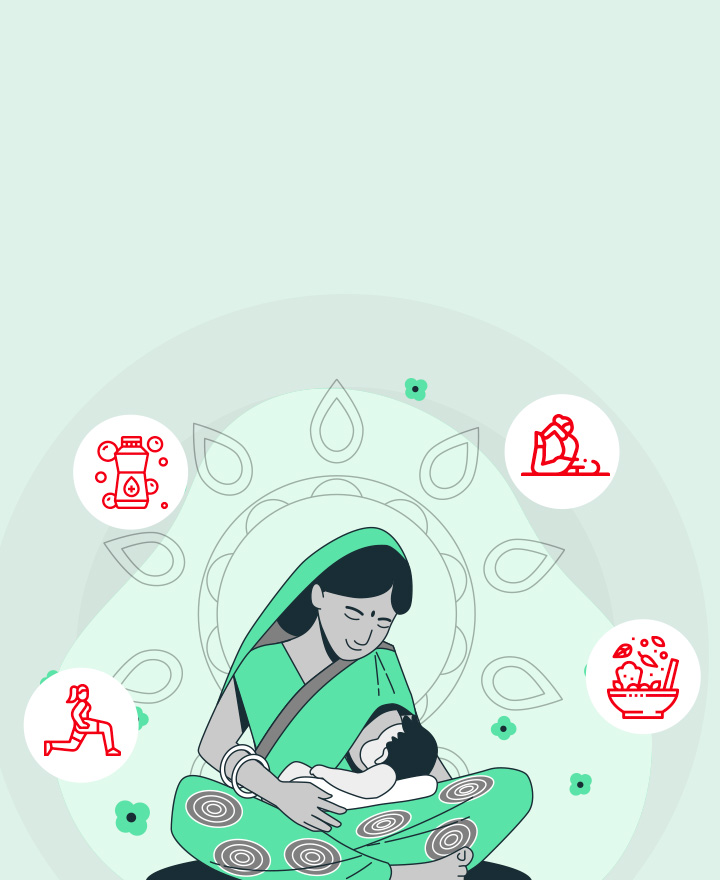

Breastfeeding and Exercising for a New Mother – All You Need to Know
As a new mom and post-childbirth,women might find it challenging to return to their normalroutine. However, exercising for a breastfeeding motheralong with a balanced diet can help in returning to a normal life.This combination is not only great for maintaining physical health, but also helps in regulation of hormones. Keep these 6 tips in mind for exercises for breastfeeding mothers
Ease into the routine
It’s important to listen to your body as it undergoes significant changes during pregnancy and childbirth. Ease yourself into a workout routine to feel better and to get back in shape.
Clear the workout plan with your physician and take it easy if you feel the strain. If you are a breastfeeding mom, low-intensity workouts such as yoga, Pilates, or water aerobics are ideal. If you like to run, consider shorter distances and lower running speeds. While some moms may be able to resume intense training shortly after childbirth, it’s not recommended for those who weren’t partaking in such intense activities prior to childbirth or pregnancy.
Moderate exercising
One must be careful that they don’t exert themselves too much as indulging in too many exercises for breastfeeding motherscan leave them drained and exhausted. Moreover, the body does not produce enough breast milk when one exercises too much.
Furthermore, strenuous exercising can lead to build-up of lactic acid, lending a slightly bitter taste to the breast milk. Also, as sweat can lend a salty taste to the breast milk, it’s recommended to wash your breasts after a workout and before feeding, or wait about 90 minutes to allow the lactic acid to dissipate in order to minimise breast refusal.
Time your workout
Timing your workout around your baby’s feeding schedule is crucial as if you feed your baby often, it can get tricky. It’s advised to plan your workout after feeding the baby, so that not only the baby is taken care of but you also feel lighter and are able to focus on the workout. If feeding is not possible, then it is advisable to pump right before the workout as exercising with fuller breasts can get uncomfortable. Finally, if none of these work on certain days, don’t stress much about it and remember that you’re doing your best.
Hydration
Keeping yourself hydrated at each time is very important as body is not able to produce enough milk if it’s not getting enough water. So, ensure you drink enough water before and after your workout, to maintain hydration levels. Always keep water with you or set reminders on your phone if you’re prone to staying thirsty.
You can also level up your hydration by infusing water with dried and fresh fruits, or vegetables, thereby increasing your mineral uptake.
Eat a more healthy diet
Eat a healthy and balanced diet to produce adequate milk. If you’re looking to shed some weight, focus on whole foods that keeps you fuller for longer and avoid empty calories (such as those from refined foods). Don’t skip meals or drastically reduce your calorie intake as breastfeeding burns about 500 calories a day. This is in addition to the increased calories your body needs to produce the milk.
Think of it as ‘me time’
Exercising post-childbirth can help regulate your mood and improve your chances of bonding with the baby. It’s the perfect time to focus on yourself and thisin turnhelps you take better care of your little one. Apart from shedding that extra weight, exercises for breastfeeding mothersalso help with post-partum depression.
Conclusion
Set your routine in such a way that you’re able to workout and focus on yourself without compromising on other aspects of your life. Seek help from family members or consider hiring a maid or babysitter to help during the initial months while you ease into a healthy routine. And most importantly, listen to your body. While doing exercises for breastfeeding mothers, if you notice any discomfort, bleeding, or leakage, stop immediately and consult a doctor.
Source:VeryWellFamily, WhattoExpect, Aaptiv
Disclaimer: This blog provides general information and discussions about health and related subjects. The information and other content provided in this blog, website or in any linked materials are not intended and should not be considered, or used as a substitute for, medical advice, diagnosis or treatment. Kindly contact your Doctor before starting a new medicine or health regime.
Related Articles
Ways To Stay Healthy During Multiple Pregnancy
The Ultimate Hamper For Postpartum Recovery
10 Best Movies You Should Watch When You’re Pregnant
Published on August 04, 2022

















 Health Insurance
Health Insurance  Travel Insurance
Travel Insurance  Car Insurance
Car Insurance  Cyber Insurance
Cyber Insurance  Critical Illness Insurance
Critical Illness Insurance
 Pet Insurance
Pet Insurance
 Bike/Two Wheeler Insurance
Bike/Two Wheeler Insurance  Home Insurance
Home Insurance  Third Party Vehicle Ins.
Third Party Vehicle Ins.  Tractor Insurance
Tractor Insurance  Goods Carrying Vehicle Ins.
Goods Carrying Vehicle Ins.  Passenger Carrying Vehicle Ins.
Passenger Carrying Vehicle Ins.  Compulsory Personal Accident Insurance
Compulsory Personal Accident Insurance  Travel Insurance
Travel Insurance  Rural
Rural